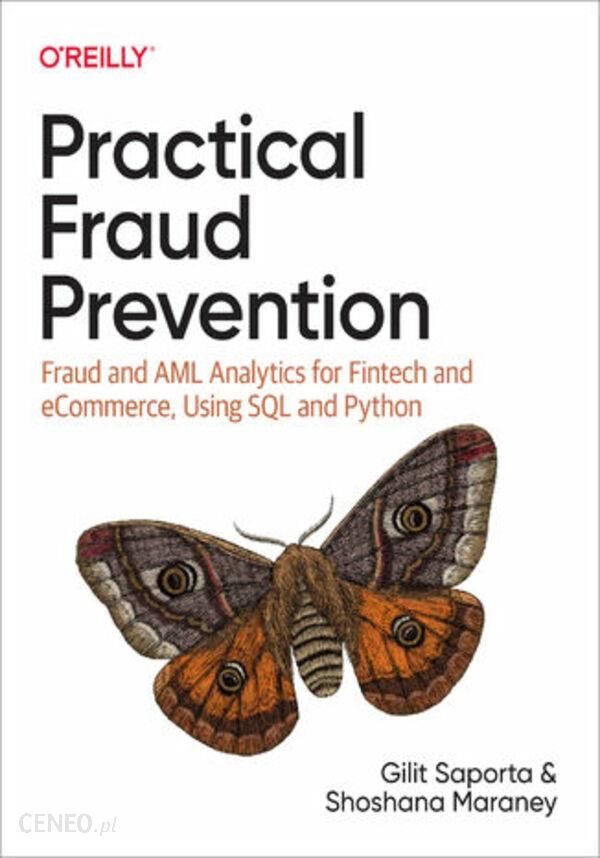Description
Over the past two decades, the booming ecommerce and fintech industries have become a breeding ground for fraud. Organizations that conduct business online are constantly engaged in a cat-and-mouse game with these invaders. In this practical book, Gilit Saporta and Shoshana Maraney draw on their fraud-fighting experience to provide best practices, methodologies, and tools to help you detect and prevent fraud and other malicious activities.Data scientists, data analysts, and fraud analysts will learn how to identify and quickly respond to attacks. Youll get a comprehensive view of typical incursions as well as recommended detection methods. Online fraud is constantly evolving. This book helps experienced researchers safely guide and protect their organizations in this ever-changing fraud landscape.With this book, you will:Examine current fraud attacks and learn how to mitigate themFind the right balance between preventing fraud and providing a smooth customer experienceShare insights across multiple business areas, including ecommerce, banking, cryptocurrency, anti-money laundering, and ad techEvaluate potential risks for a new vertical, market, or productTrain and mentor teams by boosting collaboration and kickstarting brainstorming sessionsGet a framework of fraud methods, fraud-fighting analytics, and data science methodologies Spis treści:ForewordPrefaceIntroduction to Practical Fraud PreventionHow to Read This BookWho Should Read This Book?Conventions Used in This BookOReilly Online LearningHow to Contact UsAcknowledgmentsI. Introduction to Fraud Analytics1. Fraudster TraitsImpersonation TechniquesDeception TechniquesSocial EngineeringThe Dark WebFraud Rings/LinkingVolatilityCard and Account TestingAbuse Versus FraudMoney Laundering and Compliance ViolationsSummary2. Fraudster ArchetypesAmateur FraudsterCookie-Cutter FraudsterGig Economy FraudsterPsychological FraudsterProduct-Savvy FraudsterTech-Savvy FraudsterBot GeneratorHackerOrganized Crime FraudsterDistinction Between Organized Crime and Cookie-Cutter FraudstersSmall But Organized CrimeFriendly FraudsterPop QuizSummary3. Fraud Analysis FundamentalsThinking Like a FraudsterA Professional Approach to FraudTreat Categories with CautionAccount Versus TransactionThe Delicate Balance Between Blocking Fraud and Avoiding FrictionProfit MarginsMaintaining Dynamic TensionThe Psychological CostTiers of TrustAnomaly DetectionPractical Anomaly Detection: Density Case StudyCrises: Planning and ResponseEconomic Stress Affects Consumers Situationsand DecisionsPrepare for Shifts in User BehaviorsInterdepartmental Communication and CollaborationFriendly FraudPrioritizing New ProjectsSummary4. Fraud Prevention Evaluation and InvestmentTypes of Fraud Prevention SolutionsRules EnginesMachine LearningHybrid SystemsData Enrichment ToolsConsortium ModelUsing consortium dataProviderless consortiumsBuilding a Research Analytics TeamCollaborating with Customer SupportMeasuring Loss and ImpactJustifying the Cost of Fraud Prevention InvestmentInterdepartmental RelationsData Analysis StrategyFraud Tech StrategyData Privacy ConsiderationsIdentifying and Combating New Threats Without Undue FrictionKeeping Up with New Fraud-Fighting ToolsSummary5. Machine Learning and Fraud ModelingAdvantages of Machine LearningThe Challenges of Machine Learning in Fraud PreventionRelative Paucity of DataDelayed Feedback and OverfittingThe Labeled Data DifficultyIntelligent AdversaryExplainability, Ethics, and BiasDynamic Policies and the Merits of Story-Based ModelsData Scientists and Domain Experts: Best Practices for a Fruitful CollaborationWorking Well TogetherBe clear about who is responsible for which elementsEstablish a goalEstablish your focusKnow what main features the model should be looking atDetermine your risk appetiteDetermine what prior knowledge can be introduced into the modelDetermine which model best suits the problemFind out what the process is for fine tuning, retraining, and gap analysisIf you dont understand, askBe kind to one anotherPopular Machine Learning ApproachesAccuracy Versus Explainability and PredictabilityClassification Versus ClusteringPrecision versus recallSuccess criteriaSummaryII. Ecommerce Fraud Analytics6. Stolen Credit Card FraudDefining Stolen Credit Card FraudModus OperandiIdentificationMismatched IPRepeat Offender IPNonunique IPsMasked IPWarning: The Reliability of IP Analysis May Vary Depending on LocaleResponse to the latest technologyResolution of supported localesDefault localesMitigationExample 1: Using IP Geolocation to Identify Legitimate Hotel IPsExample 2: Using IP Traffic Trends to Identify Fake-Hotel IPsExample 3: Using Hierarchy in Variable DesignUsing Hierarchy in IP Typology Variable DesignSummary7. Address Manipulation and MulesSo Many Different Ways to StealPhysical Interception of Package: Porch PiracyPhysical Interception of Package: Convince the CourierSend Package to a Convenient Location: Open House for FraudSend Package to a Convenient Location: ReshippersRemote Interception of Package: Convince Customer SupportRemote Interception of Package: AVS ManipulationMule Interception of PackageMore Advanced: Adding an Address to the CardMore Advanced: Adding an Address to Data Enrichment ServicesMore Advanced: Dropshipping Direct/TriangulationIdentification and MitigationOpen HouseMulesReshippersSummary8. BORIS and BOPIS FraudIdentification and MitigationPickup and Return: Educating Employees Outside Your DepartmentPolicy Decisions: Part of Fraud PreventionOnline Identification and MitigationSummary9. Digital Goods and Cryptocurrency FraudDefinition and Fraudster MOTicketing FraudGift Card FraudSocial EngineeringIdentification and MitigationSummary10. First-Party Fraud (aka Friendly Fraud) and Refund FraudTypes of Friendly FraudGenuine MistakeFamily FraudBuyers Remorse, Customer Resentment, and Mens ReaFraud Versus AbuseThe Tendency to Tolerate AbuseReseller AbuseRefund FraudIdentification and MitigationIdentificationMitigationSummaryIII. Consumer Banking Fraud Analytics11. Banking Fraud Prevention: Wider ContextDifferences Between Banking and EcommerceThe Context of CybercrimeSocial Engineering in BankingA Note on PerspectiveDeepfakes: A Word of WarningSummary12. Online Account Opening FraudFalse Accounts: ContextIdentification and MitigationAsking Questions, Mapping the StoryDocument VerificationCustomer PersonasData RetentionSummary13. Account TakeoverATO: Fueled by Stolen DataThe Attack Stages of ATOThe Advantages of ATOOverlay AttacksIdentification and MitigationBiometricsMultifactor AuthenticationDevice FingerprintingNetwork ContextCustomer KnowledgeDynamic FrictionExample: Identifying a Trusted SessionSummary14. Common Malware AttacksTypes of Malware AttacksAs Part of Phishing AttacksMalware with Social EngineeringIdentification and MitigationCollaboration Is KeyAnomaly DetectionSummary15. Identity Theft and Synthetic IdentitiesHow Identity Fraud WorksIdentification and MitigationLinkingCollaborationCross-sector fraud checks and cross-organizational data sharing: Cifas, SIRA, and credit bureausSummary16. Credit and Lending FraudNonprofessional Fraudsters Engaging in Credit and Lending FraudProfessional Fraudsters and Credit and Lending FraudBuy Now Pay Later FraudIdentification and MitigationSummaryIV. Marketplace Fraud17. Marketplace Attacks: Collusion and ExitTypes of Collusion AttacksMoney LaunderingFeedback Padding and ScamsIncentives and Refund AbuseSelling Illegal GoodsThe Gig Economy of FraudIdentification and MitigationWhy Proximity Is Different in MarketplacesThinking Beyond Immediate Fraud PreventionSummary18. Marketplace Attacks: Seller FraudTypes of Seller FraudSeller Slipup Segues into FraudScamsDubious GoodsIdentification and MitigationSeller Slipup Segues into FraudScamsDubious GoodsSummaryV. AML and Compliance Analytics19. AntiMoney Laundering and Compliance: Wider ContextAML Challenges and AdvantagesSummary20. Shell Payments: Criminal and Terrorist ScreeningHow Shell Payments WorkIdentification and MitigationCriminal and Terrorist ScreeningSummary21. Prohibited ItemsIdentification and MitigationSummary22. Cryptocurrency Money LaunderingCryptocurrency: More Regulated Than You Think, and Likely to Become More SoThe Challenge of Cryptocurrency Money LaunderingIdentification and MitigationKYC: Combating Money Laundering from the StartBeyond KYCSummary23. Adtech FraudThe Ultimate Money MakerBeyond Bot Detection: Looking into Invisible AdsBot Identification in Adtech and BeyondSummary24. Fraud, Fraud Prevention, and the FutureCollaboration in the Era of The New NormalIndex
złącze ciesielskie, cementowo wapienne, deska fornirowana, farba do blachodachówki, listwa łączeniowa elektryczna, umywalka nablatowa slim, zasłona srebrna, czy różnicówka jest obowiązkowa, jaki ciężar można powiesić na płycie gipsowej, wycieraczka pod drzwi 90×60, kokon moli spożywczych, kolor miętowy pastelowy, scianka dzialowa, drzwi uniwersalne, huśtawka ogrodowa zielona, podgrzewacz przepływowy elektryczny, czujnik gazu ziemnego z certyfikatem, szafki stojące pod umywalkę, zbiór ziemniaków
yyyyy




